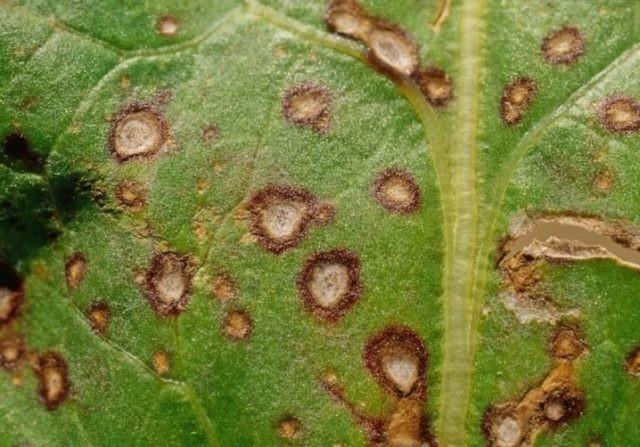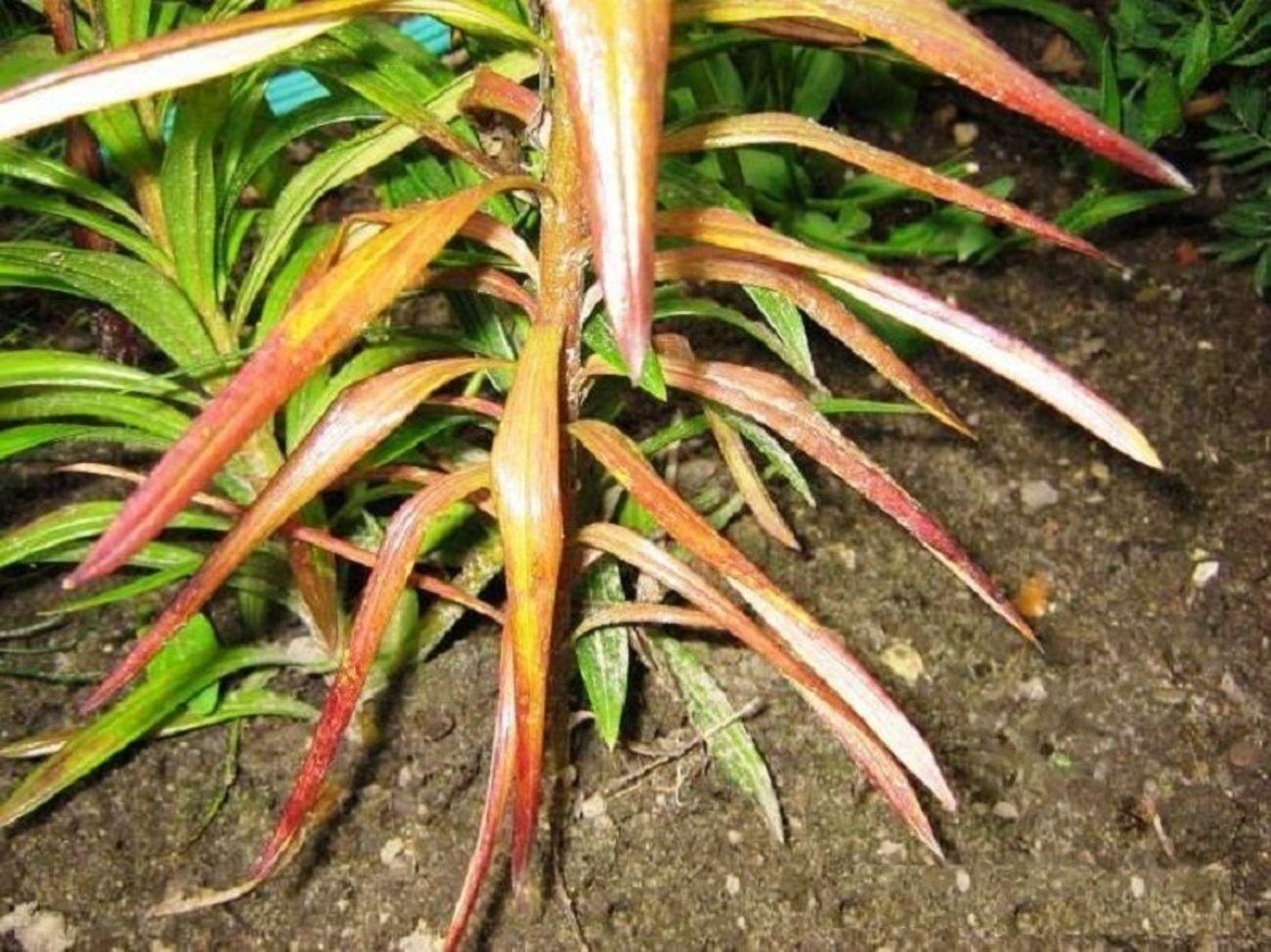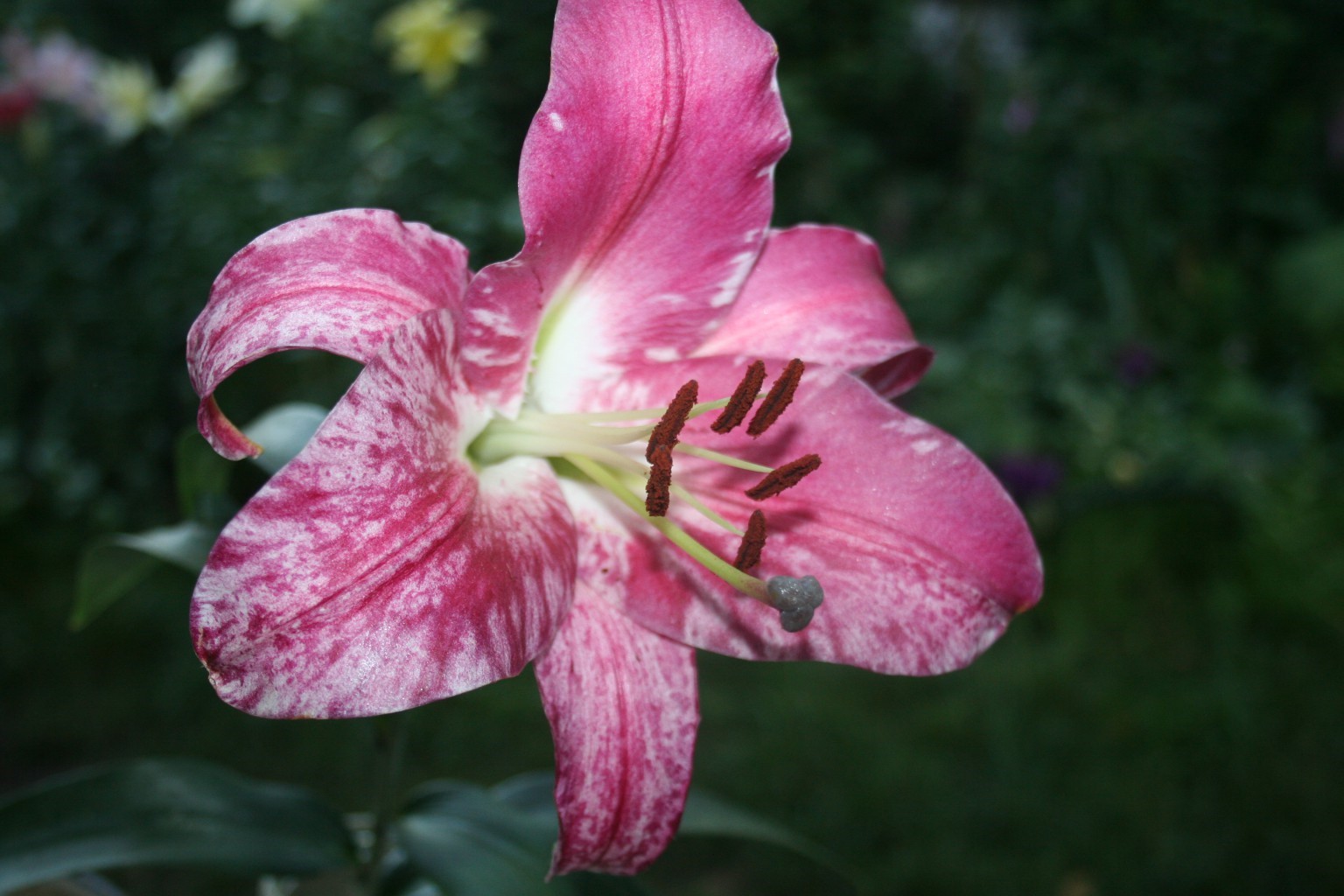Content
Diseases of lilies, with all their diversity, can be prevented. To do this, simple preventive measures are followed - digging up the soil, removing weeds in a timely manner, observing the watering norm, and periodically treating with fungicides. Due to circumstances (bad weather, exposure to pests), plant immunity can sharply decrease, making them vulnerable to diseases.
Diseases of lilies with photographs and their treatment
Diseases can be of different nature: bacterial and viral, curable and incurable. Below are the diseases that lilies are most often exposed to, as well as methods for treating them. Unfortunately, some ailments are not easy to eliminate; in this case, the emphasis is on prevention.
Gray mold (botrytis)
The disease is a fungus that appears in rainy, hot weather. Gray mold spores have amazing vitality. They can survive temperatures as low as -40 degrees if kept well hidden.

Usually the fungus is hidden under the top layer of soil or in plant debris
As a result of the damage, lilies lose their natural green color and become yellow or light brown. The shoots are the first to suffer, then the flowers fall off. If you start the disease, it will reach the lily bulbs, which will lead to death.
Fusarium
Another fungal disease that is dangerous for lilies. Unlike gray rot, fusarium is easier to detect - the microorganisms are orange. The problem is that the rust spots are in the underground part of the plant, meaning the owner will have to dig up some soil to see if the plantings are healthy.
There are other symptoms that can help localize the disease. For example, with prolonged damage, the stems begin to rot, and the leaves lose chlorophyll and turn purple or dull gold.

The main damage is caused by the bulbs: they rot and take on a reddish-brown hue.
The disease progresses as a result of high humidity. Fusarium is especially dangerous for lilies grown in greenhouses. It can be dealt with using folk remedies and the drug “XOM”.
Cercospora
The disease manifests itself in yellowing of leaves followed by the formation of spots with a dark border. Fungal formations gradually increase in size and spread to neighboring shoots.

Spring treatment of lilies from diseases involves the use of fungicides
Anthracnose
If a lily is affected by anthracnose, the owner can consider himself lucky - the disease is not fatal. However, it can spoil the appearance of the plant.

With anthracnose, the shoots dry out sharply, and brown spots appear on the outside of the plates
Rhizoctoniosis
The putrefactive disease infects the underground part of lilies, first capturing the spaces between the scales, and then moving to other areas. Weakening of the bulbs leads to wilting of the leaves and drooping of the stems. During the flowering period, lilies form fewer buds, and those that do form die quickly. Rhizoctoniosis is controlled with complex fungicides.

The causative agent of the disease can remain in the ground for more than eight years
Pythium (phythium)
The fungus takes over the lily bulbs, cutting off access to moisture and nutrients to the above-ground parts of the plant. Because of this, the shoots lose their green color, dry out and wither. The bulbs have brown spots.

As a result of the disease, lilies lose their decorative appearance
Blue mold
An infectious disease that affects lilies during storage. In the underground part, a whitish-green coating forms - spores, which will later give life to millions of other fungi.

The disease can be treated only with chemicals
Rust
Lilies may suffer from rust. This is a common disease that manifests itself in the form of red spots on the shoots. You can scrape them off with your fingernail, however, it is not advisable to do this - just for safety reasons. You can treat lilies from rusty rot, as in the video:
Penicillosis
The disease leads to gradual decay of all parts of the plant. The bulbs are the first to be affected, and after a few weeks the fungus comes to the surface. The development of the bushes slows down and flowering stops.

The disease is treated with chemistry - folk remedies are ineffective
Mosaic viruses
Viruses pose a huge threat to the health of lilies. They are almost impossible to cure, but they can be prevented. Mosaic viruses are recognized by streaks on the shoots. The leaves are damaged and lose their original shape. Lilies look tired.

The mosaic needs to be dealt with preventatively, but if it has already attacked the bush, the flowers will have to be removed from the area
Tulip variegation virus
The disease spreads with monstrous speed, killing any variety. At the same time, the flower stalks become crooked, and the leaves hang down helplessly. Young buds stop gaining volume, the petals quickly narrow.

Usually lilies become infected through an unsterilized instrument - when wounded
The virus can be transmitted by a bug, bee or fly. Damage through neighboring plantings is possible.
How to treat lilies in the spring against diseases
The diseases considered pose a threat to the decorativeness and health of lilies. If plants are located near other crops, the disease can progress and spread throughout the garden. First of all, it is necessary to remove the infected areas - even pluck flowers without regret. It is better to sacrifice beauty, but save the bush.
Healthy specimens should be treated immediately. To do this, you can use folk remedies and fungicides. Experts advise additional use of insecticides, since in moments of weakness, insects, including disease carriers, may appear.
The following drugs are recommended:
- anthracnose – “Fundazol”;
- botrytis - “XOM”, “Bordeaux mixture”;
- blue mold - there is no treatment as such, affected lilies are burned;
- cercospora blight – “Abiga-Pik”, “Hom”;
- fusarium - a weakly concentrated solution of copper sulfate or “Euparen”;
- phythium - first, the affected shoots are cut off, and healthy shoots are sprayed with “Cumulus”;
- rhizoctoniasis – “Fundazol”.
To combat rust, you need to find all the “red” leaves, cut them off with a sharp, disinfected (potassium permanganate) tool, take them out of the area and burn them. The remaining lilies are treated with Zineb, diluted with water at a concentration of 0.2%. The drug is used during watering.
Folk remedies are effective against a small number of diseases. They are usually used for preventive purposes or when the bush has just become infected.

Treatment of lilies against diseases is carried out both in spring and summer - this time is the best for the proliferation of fungi and viruses
Before planting, the material is soaked in a weakly concentrated solution of potassium permanganate. Keep for half an hour, then dry. This is a comprehensive measure. If we talk about specific diseases, for example, fungal ones, the bulbs are additionally treated with iodine - 1 ml of the product is diluted with 1 liter of water.
When the lilies are already planted, it is recommended to use an infusion of wood ash. It has a detrimental effect on fungi and harmful insects. A good alternative: treat the plantings with tobacco dust mixed with water.
Getting rid of the disease is not easy, so botanists recommend focusing on prevention:
- Raw materials for planting must be stored in a ventilated room with a low temperature. From time to time, the material is examined for signs of disease. If detected, part of the batch is rejected.
- Potassium and phosphorus are additives necessary for the health of lilies that need to be added at the beginning and at the end of the growing season.
- Lilies need free space to make the plants feel comfortable. A distance of 30 cm is maintained between neighboring crops.
- Do not neglect hydration standards. It is best to make a schedule and periodically check it with the weather forecast.
- With the arrival of autumn, it is important to take time to remove plant debris, as fungal spores like to overwinter in them. They dig up the soil, remove weeds, mulch and cover the lilies for the winter.
Conclusion
Lily diseases can be treated with both folk and chemical means. However, in order not to bring the culture to a stressful state, it is advised to adhere to preventive measures. With normal care there should be no problems with planting.








